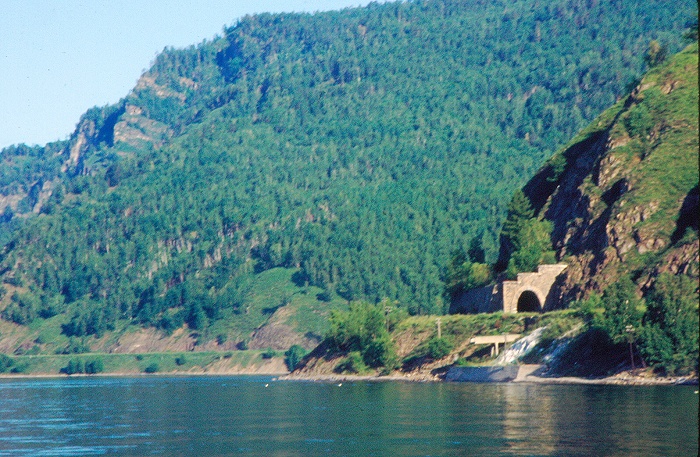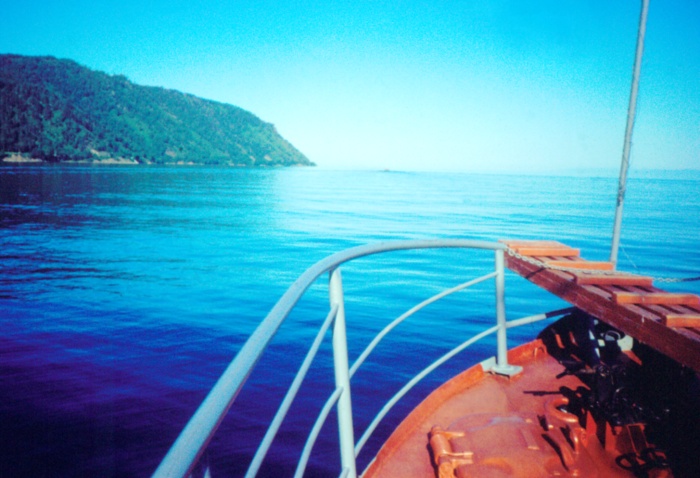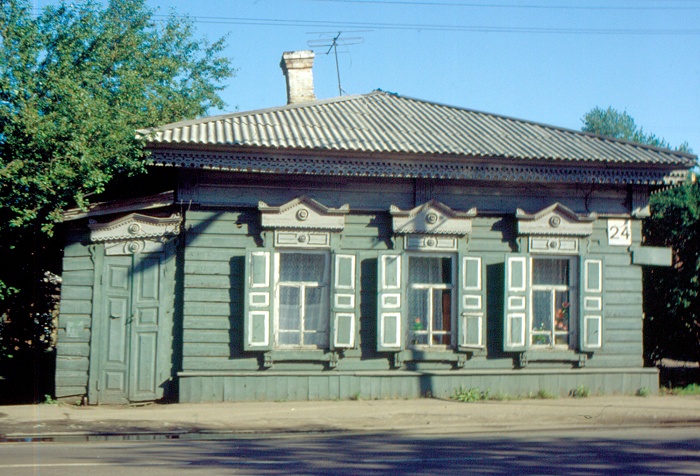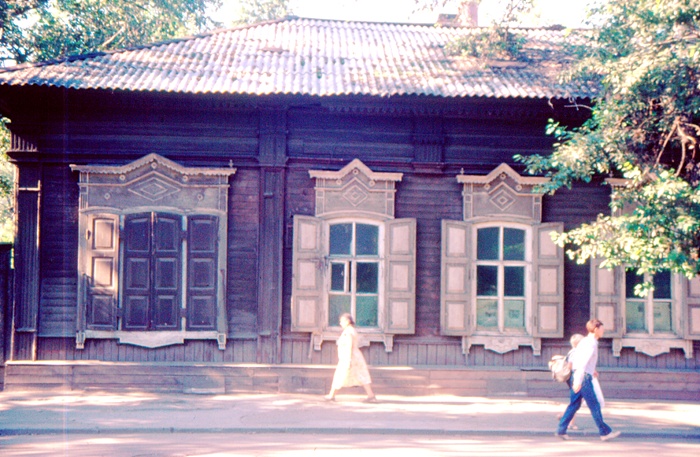| |
1991: Stalking the Wild Tourist in Deepest Siberia

The cliffs rose steeply at the edge of the world's deepest lake. Shed-like tunnels sheltering the railroad tracks at the cliff base suggested that rockfalls once threatened travellers crossing eastern Siberia. Should a boulder bounce into the water, I realized, it would sink nearly a mile before reaching the bottom of Lake Baikal.
Here and there, meadows sloped more gently toward the water's edge. In some, men and women cut hay by hand; at the end of the day, they walked homeward along the tracks, carrying their scythes and gathering bundles of wildflowers. In other fields, we saw the cars and tents of vacationers from Irkutsk and Angarsk. Seeking momentary respite from urban pressure, they drove their Ladas and Zhigulis over harrowing roads to quiet spots along the shore. Our Russian hosts, managers of the National Park that preserves the area, viewed these unsupervised visitors with apprehension and distrust. "Wild tourists," they fretted. So much better, they implied, when visitors come in organized groups; so much easier to manage and control.
Any worries of excessive regimentation disappeared with our next encounter, however. As our boat cruised northward, we spotted a group of mountain bikers whose fluorescent Lycra outfits marked them clearly as foreigners. Seeing them wheeling their bicycles down a ravine, the park director became incensed, and ordered our boat to shore. Ivan, my ranger companion, confronted the group under the eyes of his boss and a dozen foreign conservationists; as a park ranger myself, I could imagine his feelings. I edged forward to join him, hoping that unspoken fraternal bonds would tell him I was there to support, not evaluate him. The incident ended quickly: receipts proved the German bicyclists had paid their park entrance fees; having done so, they were free to ride wherever they chose. The Director fumed over his lack of authority within his own park.

Pribaikalsky National Park protects some 250 miles of the shoreline of a lake that contains nearly one-fifth of the Earth's fresh water supply. It is said that if the long, narrow basin of Lake Baikal were to be emptied, it would take all the world's rivers a year to fill it. Not only is Baikal the deepest and most capacious of lakes, it is also the oldest. While most lakes are short-lived by geological standards, Lake Baikal, formed at the juncture of two spreading continental plates, is estimated to be 25 million years old. Great age, enormous size, and isolation have allowed the evolution of many unique species in the lake's habitat: the nerpa, the world's only fresh-water seal; ephishura, tiny crustaceans that filter the lake's water to an astounding clarity; and the golomyanka, a fish so nearly transparent you can read a newspaper through its body. Wolf and bear, sable and deer inhabit the shoreline.
Russians view the lake as a national treasure; a folk song calls it "the glorious sea, sacred Baikal." They cherish it in much the same way we revere the Grand Canyon or the geysers of Yellowstone, so it's not surprising to Americans to find much of the shore set aside as national park. The struggle to establish this preserve marked a watershed in the Soviet environmental movement, however. In the 1960's and 1970's, industrial authorities decided that the lake's pristine waters would make excellent raw material for chemical processes, and they built a huge pulp mill as the first of many planned factories along the lake's margin. So great was Russian reverence for Sacred Baikal, though, that even in pre-glasnost days, outrage erupted. Preservation of Baikal became a cause celebre, an issue that united both progressives and hard-liners, yet such was the inertia of the Soviet system that it was not until 1987 that Pribaikalsky National Park was formally established, and across the lake, the pulp mill operates today.
Most Westerners who view Lake Baikal make brief excursions from Irkutsk, the transportation hub of eastern Siberia. A university town straddling the Angara River, Irkutsk is surprisingly pleasant, with a riverbank art market and side streets lined with ornamented log houses. From Irkutsk, buses reach the lakeside town of Listvyanka over a road built to accommodate President Eisenhower's planned visit, cancelled in the wake of the U2 incident. At Listvyanka, most tourists visit the Lake Baikal museum at the Limnological Institute, then troop to the terrace of the Intourist Hotel. There, high above the Angara's mouth, they watch sleek hydrofoils dock for passengers, and fishing boats unload their catch.


Traditional wooden houses in downtown Irkutsk.
Continue to Part Two
|
|